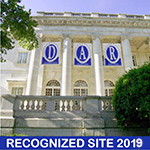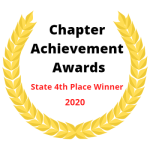-

Arapahoe Chapter Historic Markers
Preserving American history for future generations is very important to the Daughters of the American Revolution. One of the ways in which we accomplish this is by searching out people, places, and things of historical significance in our area and placing historical markers sanctioned by the office of the NSDAR’s Historian General. Each marked location is cataloged and added to the Society’s database and to a map of the United States showing the location and providing a description. Countless road trips are planned around visiting these places of American cultural heritage.
Since the organization of the chapter in 1910 Arapahoe Daughters have placed 11 markers in Boulder County honoring memorable people, places, and things!
Gillaspie House Museum Marker



The Gillaspie House was built in Nederland, Colorado, in 1906 by Dr. Carbon Gillaspie (and a friend) for his bride Grace Fairchild of Illinois. Carbon was both the town doctor and the mayor. Grace was living in Boulder and was one of the first graduates of the Boulder Business College. For a few years they lived in the small, one-story frame house with their young son John. In order for Carbon to expand his medical practice, the family eventually moved to Boulder where Grace was active in many Boulder area organizations including the American Legion Auxiliary and the Boulder Women’s Club. She also took pride in many leadership roles in the DAR including Arapahoe Chapter Regent (1936-1938), Colorado State Regent (1938-1941), and National Vice Regent (1942-1946). In 1975, Dr. John Gillaspie and his wife donated the house to the town of Nederland with the stipulation that it become a museum. The home is now furnished with artifacts of the time and is enjoyed by many tourists, students, and local residents.The marker was placed next to the park bench donated by the Arapahoe Chapter and dedicated on August 13, 2022.
The inscription includes the NSDAR Insignia and reads:
GILLASPIE HOUSE
THE HOME OF
DR CARBON AND
MRS GRACE FAIRCHILD GILLASPIE
CHAPTER REGENT, 1936 – 1938
STATE REGENT, 1938 -1941
NATIONAL VICE PRESIDENT, 1942-1946
MARKER PLACED BY
ARAPAHOE CHAPTER, NSDAR 2022To visit this marker and the museum go to the southeast corner of Fourth and Bridge Streets in Nederland, Colorado.
Arbor Day Christensen Park Bench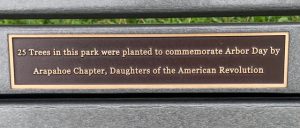
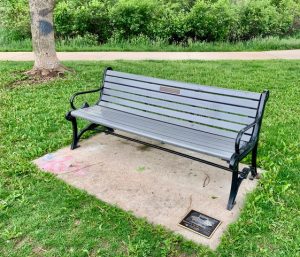
The Osage orange tree, grown from a seed of a 300-year-old tree located at Patrick Henry’s Red Hill home in Virginia, was donated and planted in Christensen Park by the Arapahoe Chapter, NSDAR, in 2008. The tree later died and the marker was removed. In 2009, a new marker to commemorate Arbor Day and the 23 trees planted in the park by the chapter was placed into the bench honoring Frances Wyrick, former Arapahoe Chapter Regent and conservation Chair.
The inscription on the marker reads:
23 Trees in this park were planted to commemorate Arbor Day by
Arapahoe Chapter, Daughters of the American RevolutionTo visit this marker go to Christensen Park on Kings Ridge Blvd. in Boulder, Colorado.
First Church Bell in Boulder
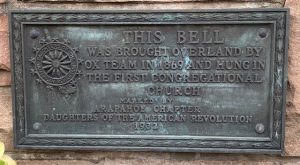
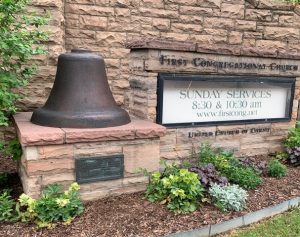
This bell was brought overland by ox team in 1869 and hung in the original church building across Pine Street from its present location. Two bells, one for the church and one for the schoolhouse, arrived in Boulder brought in the same wagon. The church bell was removed from the original Congregational Church when the church was razed in 1905 and put in the parson’s yard. It was mounted there to be tolled for the last time at 9:11 a.m., July 4, 1926. This was the sesquicentennial of America’s independence and the same hour that the Liberty Bell was sounded in Philadelphia.
The marker included the NSDAR Insignia and reads:
THIS BELL
WAS BROUGHT OVERLAND BY
OX TEAM IN 1869 AND HUNG IN
THE FIRST CONGREGATIONAL
CHURCH
MARKED BY
ARAPAHOE CHAPTER
DAUGHTERS OF THE AMERICAN REVOLUTION
1932One can find this marker at the southwest corner of Canyon Blvd. and Pine St. in Boulder, Colorado 80303.
Frances Wyrick Christensen Park Bench


For many years beginning in 1995, former Arapahoe Chapter Regent Frances Wyrick was Conservation Chairman. She worked with the City of Boulder Forestry Department to choose a total of 31 trees which were planted in this park. Frances made it her goal to plant trees in Christensen Park because of the connection between Jean Christensen and the DAR. She felt it was a good vehicle to use as rationale to plant our trees and educate the public about the DAR’s commitment to conservation. Frances also donated four pear trees and a buckeye tree with her own funds. She was awarded the NSDAR Conservation Award for donating and planting the trees and her Adopt-a-Road participation.
In 2011, the Boulder Forestry Department placed at the foot of the bench a plaque in honor of Frances because she had been the force behind the completion of filling the park to capacity. The Arapahoe Chapter, NSDAR, continues to plant trees, typically on Arbor Day, at other parks in Boulder to continue the chapter’s commitment to conservation.
The inscription reads:
IN HONOR OF
FRANCES WYRICK,
FOR HER LOVE OF TREES
ARAPAHOE CHAPTER
DAUGHTERS OF THE AMERICAN REVOLUTION
APRIL ,2009To visit this marker go to Kings Ridge Boulevard, Boulder, Colorado 80301. The marker is embedded into the concrete slab on which the park bench sits at the southwest corner of the park.
Scott Carpenter Park Marker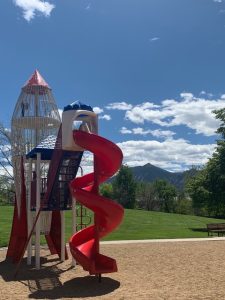 Malcolm Scott Carpenter was born in Boulder in 1925 and graduated from Boulder High School and the University of Colorado. In the 1950s he became a test pilot, then was accepted as one of the seven original astronauts in the National Aeronautics and Space Administration’s (NASA’s) new manned space flight program.
Malcolm Scott Carpenter was born in Boulder in 1925 and graduated from Boulder High School and the University of Colorado. In the 1950s he became a test pilot, then was accepted as one of the seven original astronauts in the National Aeronautics and Space Administration’s (NASA’s) new manned space flight program.On May 24, 1962, Carpenter orbited the earth three times in his Aurora-7 Mercury spacecraft. Upon his return, he was honored as Boulder’s “hometown hero.” The city of Boulder temporarily displayed a model of the Aurora-7 in front of the Boulder County courthouse on Pearl Street.
The city also named Scott Carpenter Park for its native son. A highlight of the park is the 26-foot, 4-level piece of playground equipment designed to look like a rocket ship. It is still there and continues to delight generations of children.
After his flight, Carpenter worked on the development of the lunar module and as the executive assistant to the director of the Manned Spacecraft Center.
The marker was dedicated on May 27, 1964, and mounted on a building that has since been destroyed and replaced. The whereabouts of the marker is unknown. Arapahoe Chapter plans to replace it.
The inscription included the NSDAR Insignia and read:
HONORING LT. CMDR. SCOTT CARPENTER
A NATIVE COLORADOAN
FOR HIS EARTH ORBIT FLIGHT
MAY 24, 1962
ERECTED BY THE ARAPAHOE CHAPTER
DAUGHTERS OF THE AMERICAN REVOLUTIONScott Carpenter Park is located on the southwest corner of 30th Street and Arapahoe Ave. in Boulder.
Old Red Rocks Marker

In 1858, Captain Thomas Aikins and others from a party of Nebraska gold seekers moved up the South Platte River from Fort Saint Vrain, arriving at this site on October 17. Here they built 11 cabins at the foot of Red Rocks at the mouth of Boulder Canyon.
The Boulder City Town company was organized February 10, 1859, with 56 shareholders. Alfred A. Brookfield was elected president. One thousand two hundred and forty acres from the mouth of Boulder Canyon for 2 miles down Boulder Creek were selected as the townsite, which was platted into 337 blocks of 12 lots each.
In the 1960s, Red Rocks was renamed Settlers Park after the first American prospectors who camped in this area during the 1858–1859 winters. Upon his arrival at Fort Saint Vrain 40 miles east, Thomas Aikins – a Missouri farmer with an eye for riches – surveyed the Boulder foothills, noting the “mountains looked right for gold.” He broke from his Cherry Creek-bound party with a group of 24 men and pitched tents beneath the area’s iconic rock formations on October 17, 1858. The men succeeded on January 12, 1859, with a large find said to have been worth $100,000 – a fortune at the time. An influx of settlers followed, cabins were built, sawmills erected, and Boulder quickly grew into a mining supply town. This marker was dislodged by vandalism and is now missing. The park is now called The Peoples’ Crossing and the chapter has no current plans to place a new marker there.
The inscription read:
RED ROCK
FIRST WHITE CAMP IN BOULDER COUNTY.
ESTABLISHED NEAR THIS CLIFF BY THE
ORIGINAL GOLD SEEKERS PARTY.
OCTOBER 17, 1858Members of the party: ALFRED A. BROOKFIELD, CAPT. A.K. YOUNT, CAPT. THOS. AIKINS, CHARLES CLOUSER, DANIEL GORDON & BROTHER, THOMAS LORTON, MOORE & DICKENS, SAMUEL J. AIKINS, THEODORE SQUIRES, JOHN ROTHROCK, WHEELOCK BROTHERS, L.L. AIKINS.
ERECTED 1939 BY ARAPAHOE CHAPTER DAUGHTERS OF THE AMERICAN REVOLUTION
Engine No. 30
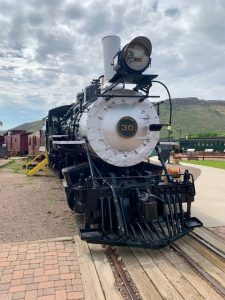

The bronze plaque, furnished by Arapahoe Chapter, NSDAR, was mounted on a block of hard Eldora granite which was furnished and placed by the Boulder County Commissioners.
Both the engine and the plaque were on display in Boulder’s Central (City) Park until they were moved to the Colorado Railroad Museum in Golden in 2012. The restored Old Engine #30 is now on display near the museum’s library but the marker has not yet been mounted.
The Greeley, Salt Lake and Pacific Railroad was a Union Pacific-controlled railroad in three segments – a narrow gauge line between Greeley and Stout (the site of which is now under Horsetooth Reservoir) by way of Fort Collins, a standard gauge branch between Loveland and Arkins, and the narrow-gauge Boulder to Sunset, all connected by Union Pacific trackage.
The Boulder-Sunset line operated from 1883 to 1894 when it was washed out in a flood. In 1897, the Colorado and Northwestern Railroad built a line from Boulder to Sunset on the route of the Greeley, Salt Lake and Pacific, but with an improved alignment that reduced the number of bridges from 66 to 17. In 1898, the railroad was extended to Ward and in 1904 to Eldora.
In 1909, the Colorado & Northwestern reorganized as the Denver Boulder & Western. The standard gauge line was abandoned in 1919 and the trackage removed in 1921. Engine No. 30 was returned to Boulder on a narrow-gauge flatcar.
Dr. John B. Schoolland, his committee, and numerous volunteers contributed to the restoration and preservation of the locomotive.
The Arapahoe Chapter Historic Preservation committee plans to work with the museum to place the marker near the engine as soon as a permanent location for the engine has been established.
The marker includes the NSDAR Insignia and reads:
THIS TABLET IS THE
PROPERTY OF THE STATE OF COLORADO
OLD ENGINE NO. 30
OPERATED OVER THE NARROW GAUGE
RAILROAD (OPENED IN 1883) AFFEC-
TIONATELY KNOWN AS “THE SWITZERLAND
TRAIL OF AMERICA” BETWEEN BOULDER,
ELDORA, AND WARD, 1898-1919, AND
OVER THE DENVER AND SOUTH PARK AND
THE RIO GRANDE SOUTHERN UNTIL 1952.
A MEMORIAL TO COLORADO RAILROAD
AND MINING PIONEERS
ERECTED BY
THE STATE HISTORICAL SOCIETY OF COLORADO
FROM THE WM. A. BRAIDEN FUND AND BY
THE ARAPAHOE CHAPTER, D. A. R.
1952To visit this marker go to the Colorado Railroad Museum at 17155 West 144th Ave. in Golden, Colorado 80403.
First Public School in Colorado Marker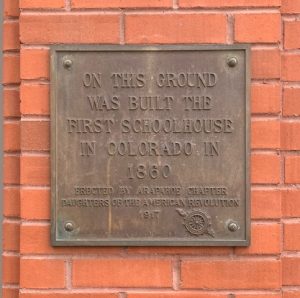

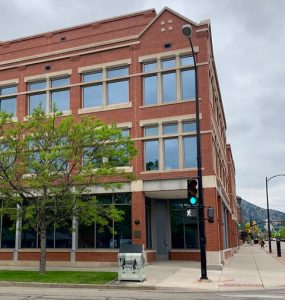
Arapahoe Chapter placed a plaque at the first public school in Colorado in 1917. The school was started by Abner Brown on land donated by Marinus G. Smith. Construction cost was $1,200, raised by subscription. A frame building, 24 x 36 feet, was moved from the site and replaced with Central School in 1872. When this stone building was torn down in 1972, its demolition spurred an interest in historic preservation. The marker is now mounted to the bricks of the Westpeak Building across the street from the original site.
The plaque includes the NSDAR Insignia and reads:
ON THIS GROUND
WAS BUILT THE
FIRST SCHOOLHOUSE
IN COLORADO IN
1860
ERECTED BY ARAPAHOE CHAPTER
DAUGHTERS OF THE AMERICAN REVOLUTION
1917Visit this marker at 1470 Walnut St. In Boulder, Colorado 80303.
First Wheat Field in Colorado Marker Sylvanus, Luther, and Henry Wellman came west during the 1859 gold rush, but they turned to farming when they realized that flour was almost as valuable as gold.
Sylvanus, Luther, and Henry Wellman came west during the 1859 gold rush, but they turned to farming when they realized that flour was almost as valuable as gold.The Wellman brothers had grown up on a farm in Pennsylvania, so they decided to stay in the occupation they knew best. They ended up supplying the mountain miners with vegetables, as well as flour ground from wheat – grown on “Keystone Ranch,” the first farm in what would become Boulder County.
On their way, they heard New York journalist Horace Greeley speak of the great future that awaited all who moved to what is now Colorado.
With renewed enthusiasm, the brothers joined a small party bound for Boulder. When they got there, they built some log cabins on 640 acres of land along Boulder Creek, in the vicinity of what now is Arapahoe Avenue and 48th Street.
In the spring, the men planted wheat. According to Amos Bixby, who wrote the earliest account of the county’s history, the Wellman’s first wheat harvest averaged 60 bushels per acre – all cut by hand with scythes.
The Arapahoe Chapter marked the area in the 1930s with an iron marker. The marker was destroyed when the property was sold and a neighborhood of homes was built. The chapter plans to place a new historic marker commemorating the site near the bike path which runs through the area.
Mrs. Lenna Brainard Derham Red Oak Tree Marker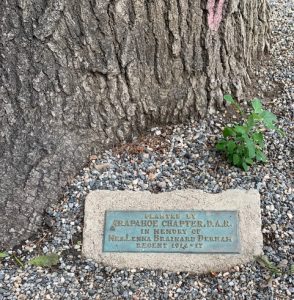

The plaque is located at the foot of an oak tree near the west steps of the bandshell in Central Park at Broadway and Canyon Streets. It is dedicated to Mrs. Lenna Brainard Derham, Arapahoe Chapter Regent from 1914–1917. A red oak tree was planted first to mark the site for the plaque to honor Mrs. Derham in May 1926. The first tree died and another was planted in April 1928.
The inscription reads:
PLANTED BY
ARAPAHOE CHAPTER, D.A.R.
IN MEMORY OF
MRS. LENNA BRAINARD DERHAM
REGENT 1914–17To visit this marker go to the Central Park Bandshell at Broadway and Canyon Streets in Boulder, Colorado. Find the marker at the base of the red oak tree near the west steps of the bandshell.
Vietnam Memorial Marker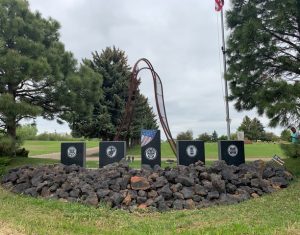
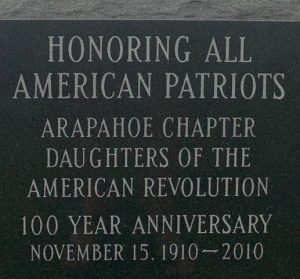
Five black marble markers are included in the memorial. Each one displays the seal of one of the five branches of the armed forces. On the reverse side of the markers there are inscriptions by people in the community with words of remembrance or a patriotic sentiment like Arapahoe Chapter’s inscription honoring all American Patriots listed on the U.S. Army’s tablet.
The inscription reads:
HONORING ALL
AMERICAN PATRIOTS
ARAPAHOE CHAPTER
DAUGHTERS OF THE
AMERICAN REVOLUTION
100 YEAR ANNIVERSARY
NOVEMBER 15, 1910-2010To visit this marker head north on 28th St. (Colorado Highway 7) in Boulder, turn right onto Kalmia and right again into the cemetery. Follow the dirt driveway until you see five headstones on the south side of the grounds. Veterans Memorial Garden, Mountain View Cemetery, Boulder, Colorado.
References
1. Stieghorst, Junann J. Colorado Historical Markers of the Colorado State Society, National Daughters of the American Revolution. Littleton, Colo: Littleton Independent, 1978 <https://archive.org/details/coloradohistoric00stie>.
2. McLaughlin, Hildegarde H., and F. B. McLaughlin. A Guidebook to DAR Historic Markers in Colorado: Where They Are, What They Look Like, How to Find Them. [Place of publication not identified]: [Colorado State Society of the NSDAR], 1991.
3. Ruth, Christine Etherton. Travelling Through the History of Colorado: Colorado State Society, NSDAR Historical Markers.

